🏙️ Urban Resilience: Essential Concepts for Reading Comprehension
Urban resilience refers to the capacity of cities to adapt, recover, and thrive in the face of environmental, social, and economic challenges. With rapid urbanization and increasing vulnerabilities like climate change and disasters, resilient urban systems are critical for sustainable development. RC passages on urban resilience often explore strategies to enhance infrastructure, policies, and community engagement. Understanding these concepts equips readers to analyze urban challenges and solutions effectively.
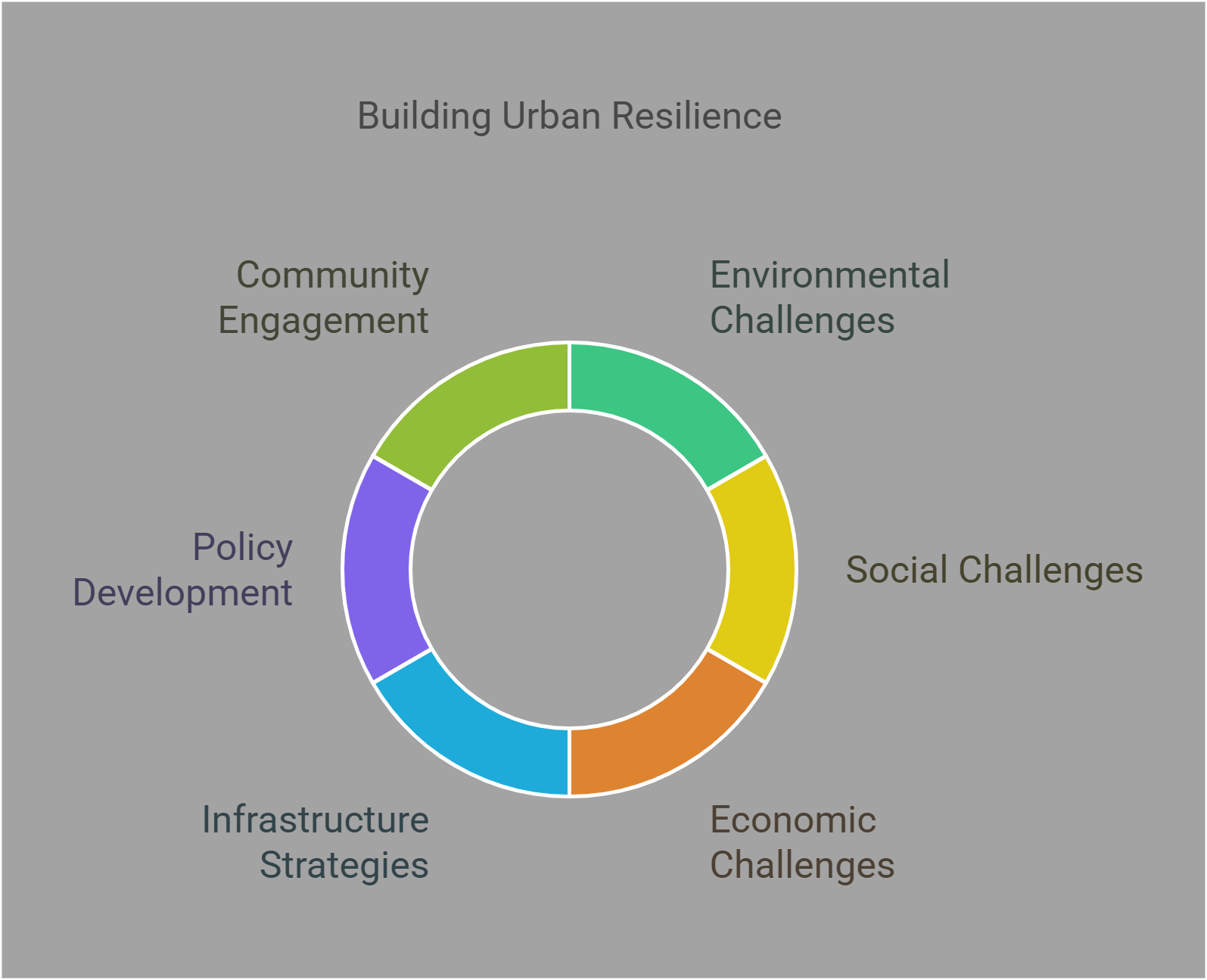
📋 Overview
This guide explores the following essential concepts in urban resilience:
- Climate-Resilient Cities
- Disaster Preparedness in Urban Areas
- Sustainable Urban Water Management
- Energy-Efficient Infrastructure
- Urban Agriculture and Food Security
- Resilient Public Transportation Systems
- Affordable Housing Policies
- Green Roofs and Urban Cooling
- Community-Led Urban Development
- Smart Emergency Response Systems
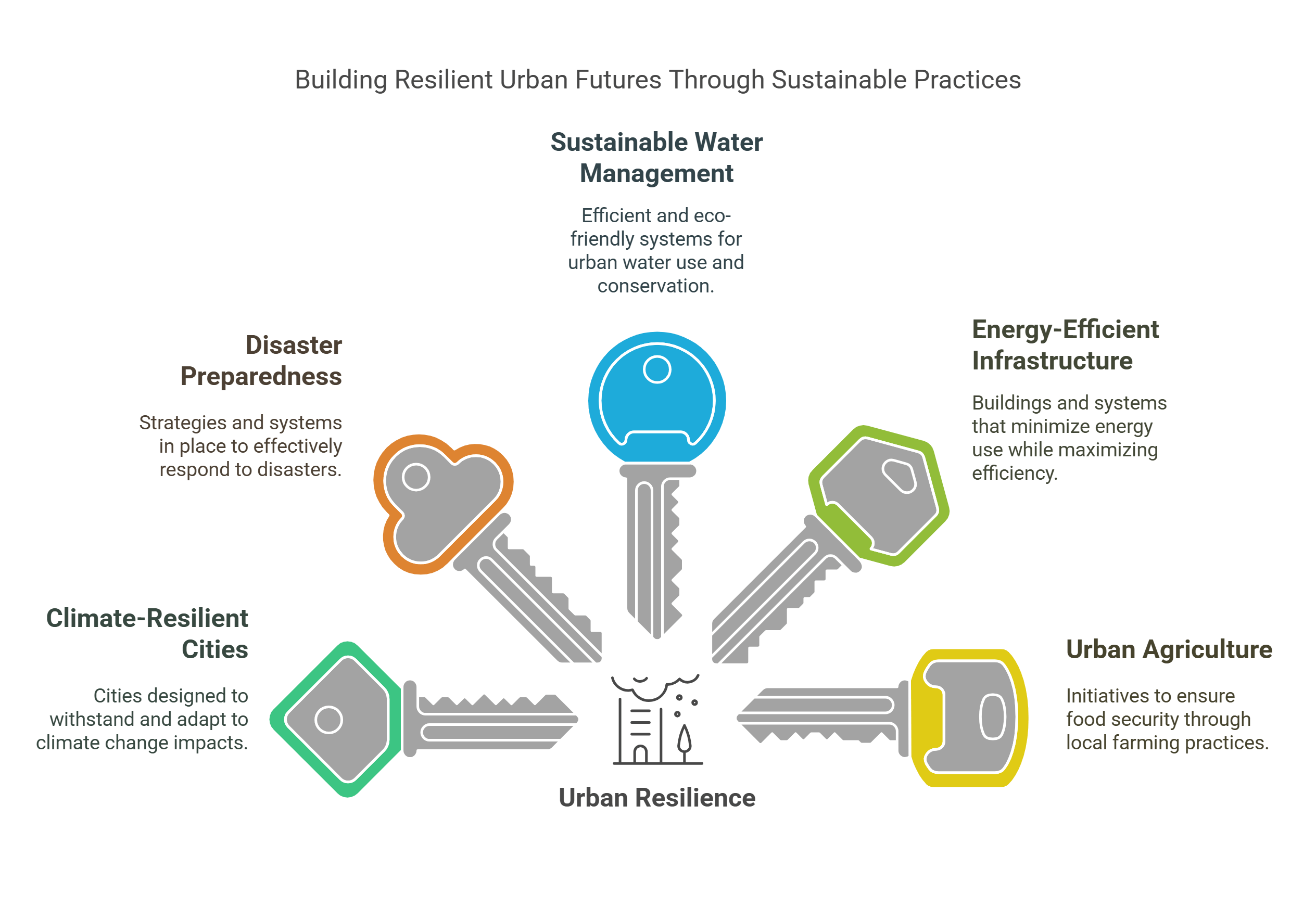
🔍 Detailed Explanations
1. Climate-Resilient Cities
Detailed Explanation: Climate-resilient cities are designed to withstand and adapt to the impacts of climate change, such as rising temperatures, extreme weather, and sea-level rise.
- Key Strategies:
- Flood-resistant infrastructure (e.g., levees, stormwater systems).
- Urban greenery to reduce heat island effects.
- Climate-conscious urban planning.
Example: Copenhagen’s cloudburst management plan includes water plazas and underground storage to handle heavy rainfall.
Explained Simply: Climate-resilient cities are like umbrellas that protect urban populations from climate shocks.
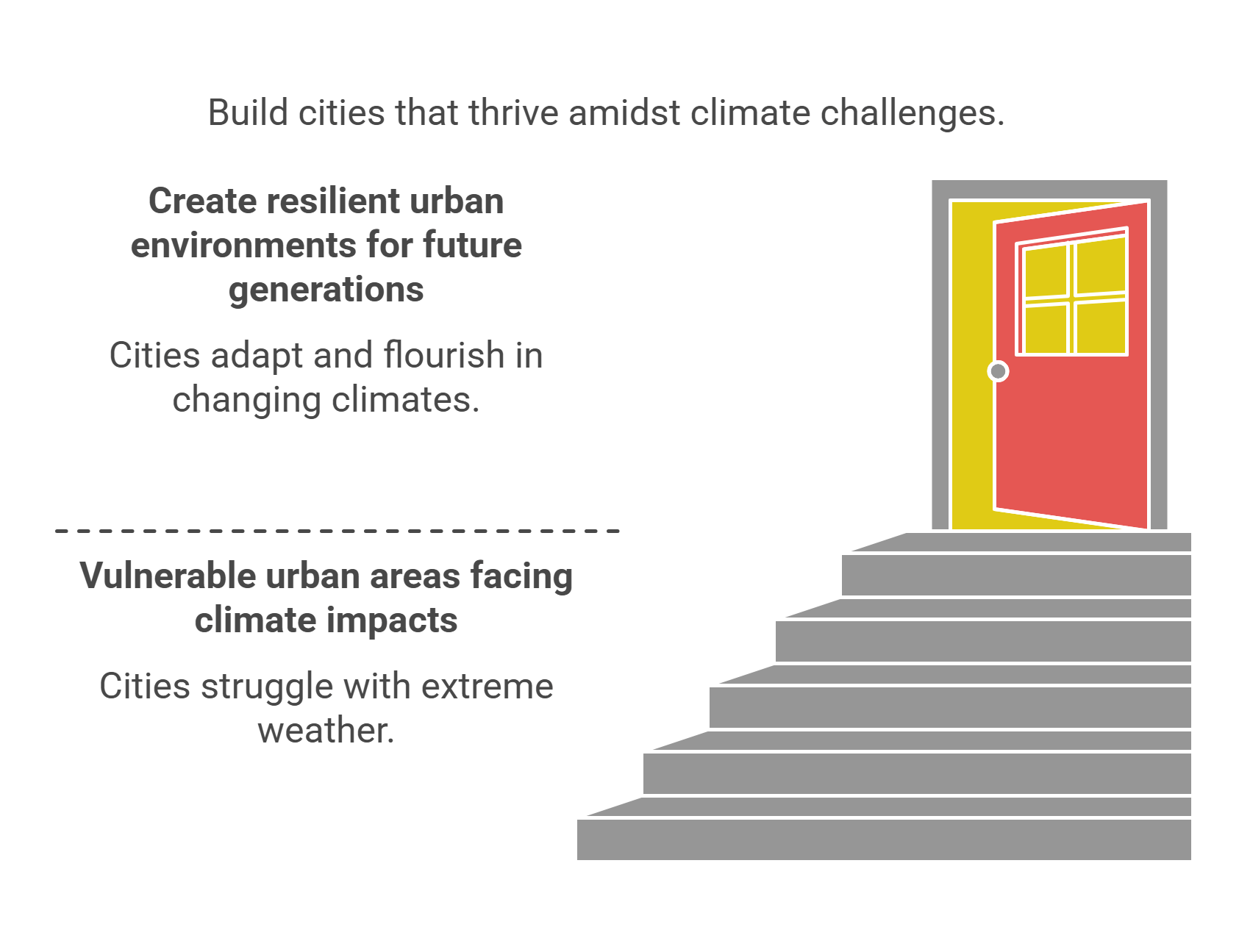
2. Disaster Preparedness in Urban Areas
Detailed Explanation: Disaster preparedness involves creating systems and plans to mitigate the impact of natural or man-made disasters in urban areas.
- Key Elements:
- Early warning systems for floods, earthquakes, or storms.
- Emergency evacuation routes and shelters.
- Urban resilience drills to educate citizens.
Example: Tokyo’s earthquake preparedness includes structurally reinforced buildings and community drills.
Explained Simply: Disaster preparedness is like having a first-aid kit for cities, ready to respond to emergencies.
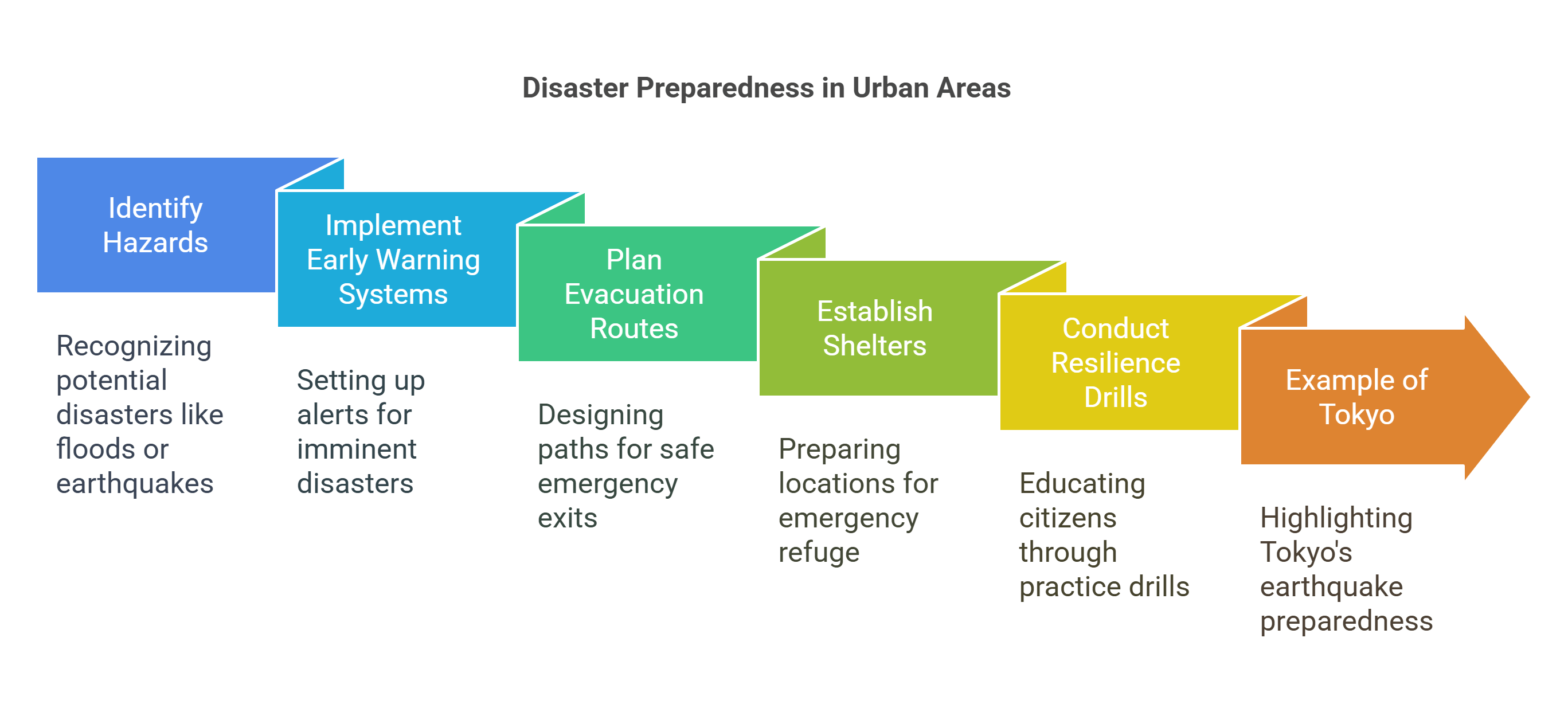
3. Sustainable Urban Water Management
Detailed Explanation: Sustainable water management ensures the efficient use, recycling, and conservation of water in cities to meet present and future needs.
- Key Practices:
- Rainwater harvesting systems.
- Wastewater recycling and reuse.
- Protecting urban water bodies from pollution.
Example: Singapore’s NEWater system recycles wastewater to supplement its drinking water supply.
Explained Simply: Sustainable water management is like ensuring a city never runs out of clean, usable water.
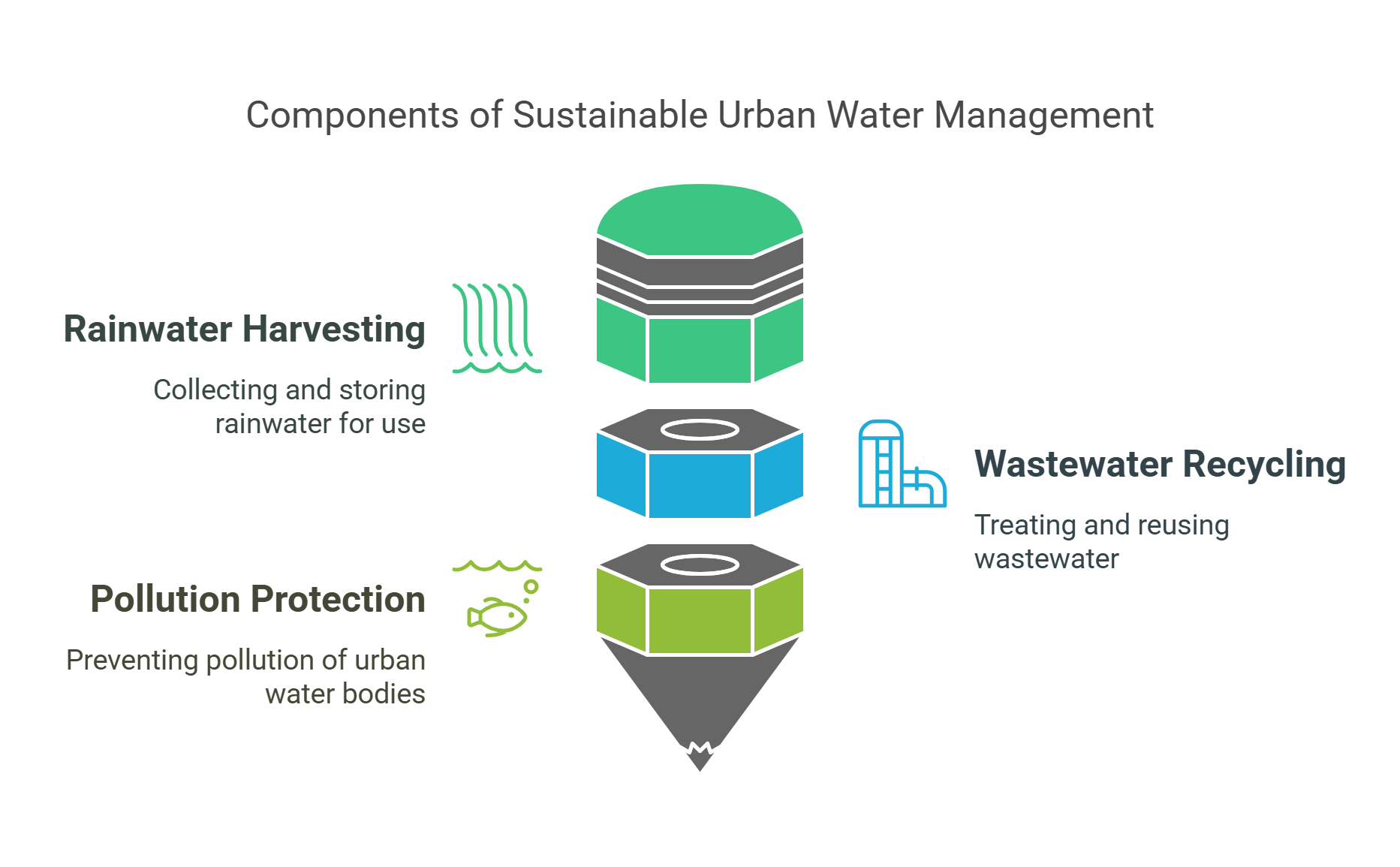
4. Energy-Efficient Infrastructure
Detailed Explanation: Energy-efficient infrastructure minimizes energy consumption while maximizing performance, contributing to urban sustainability.
- Key Features:
- Energy-efficient buildings with insulation and LED lighting.
- Use of renewable energy sources, such as solar panels.
- Smart grids for efficient energy distribution.
Example: Stockholm uses district heating systems powered by renewable energy to reduce carbon emissions.
Explained Simply: Energy-efficient infrastructure is like building smarter, greener homes and systems for cities.
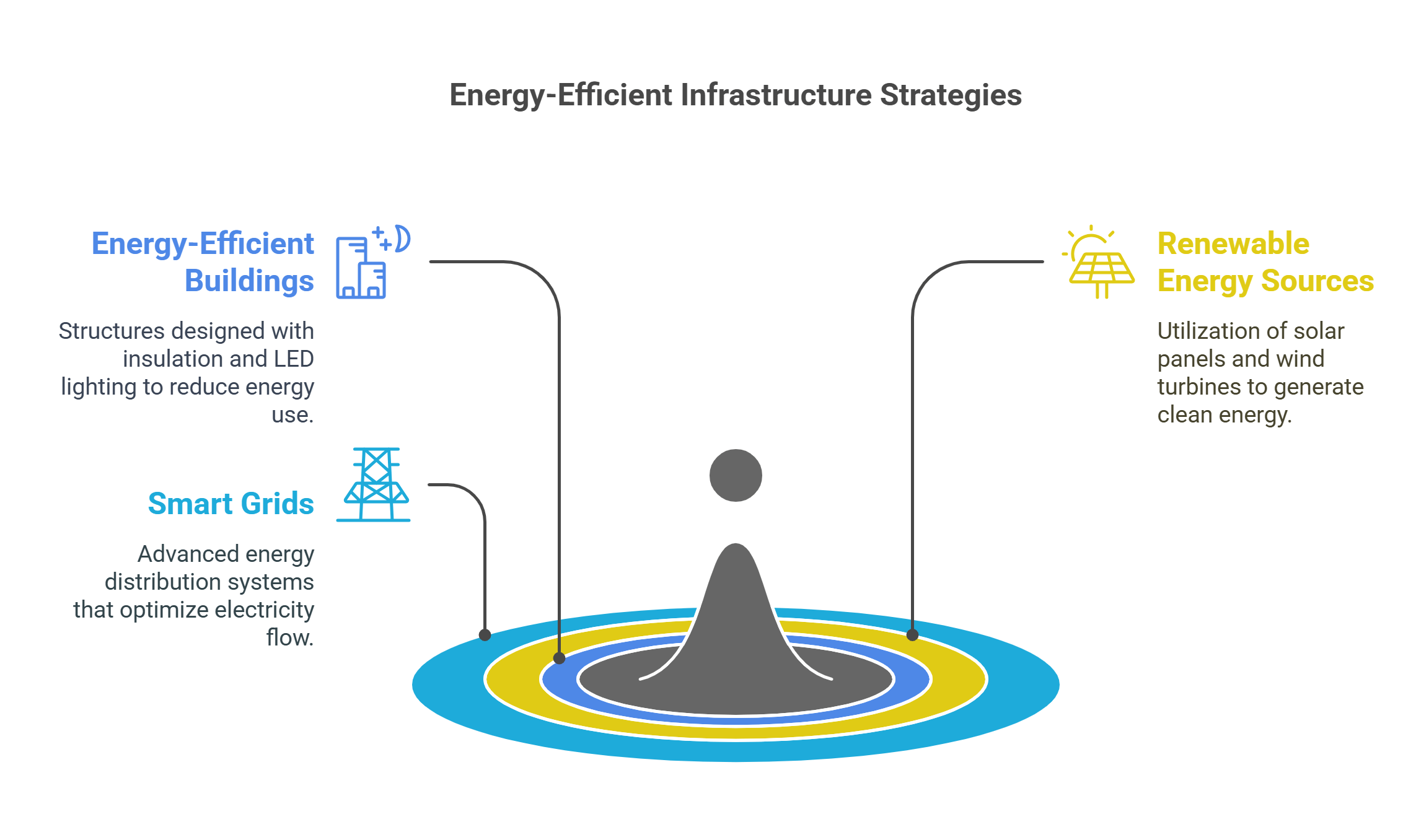
5. Urban Agriculture and Food Security
Detailed Explanation: Urban agriculture involves growing food within city boundaries to enhance food security and reduce reliance on external supplies.
- Benefits:
- Reduces food miles and greenhouse gas emissions.
- Promotes local, fresh food availability.
- Provides green spaces and community engagement opportunities.
Example: Detroit has repurposed vacant lots into urban farms, improving food access in underserved areas.
Explained Simply: Urban agriculture is like bringing the farm closer to the table for urban dwellers.
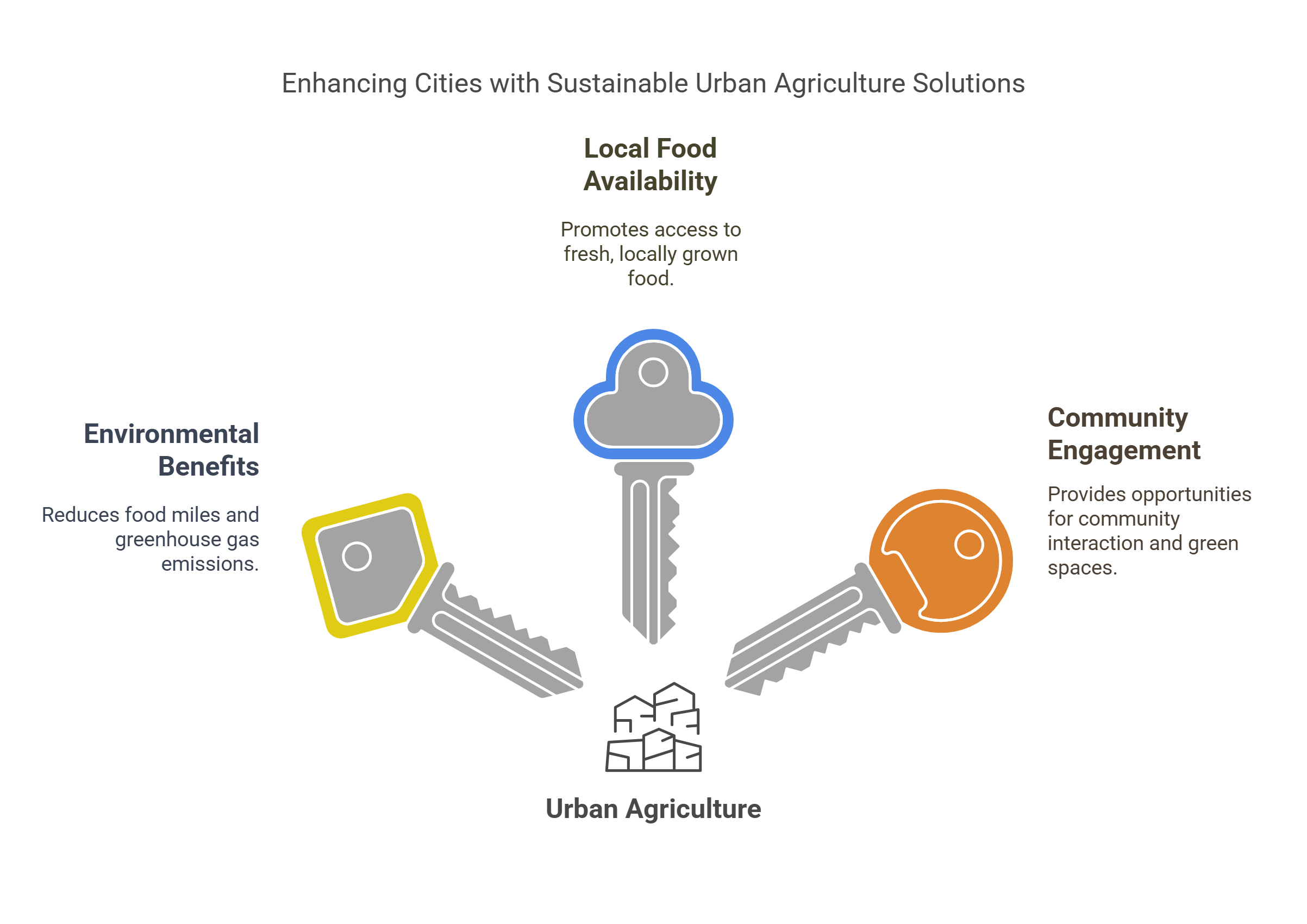
6. Resilient Public Transportation Systems
Detailed Explanation: Resilient public transportation systems are designed to maintain functionality during disruptions and adapt to future challenges.
- Key Features:
- Electrification of buses and trains to reduce emissions.
- Flood-resistant transit systems.
- Integrated transport networks that reduce dependence on private vehicles.
Example: London’s Crossrail system incorporates flood defenses to ensure continued operation during extreme weather.
Explained Simply: Resilient public transportation is like a city’s lifeline, keeping people moving even during disruptions.
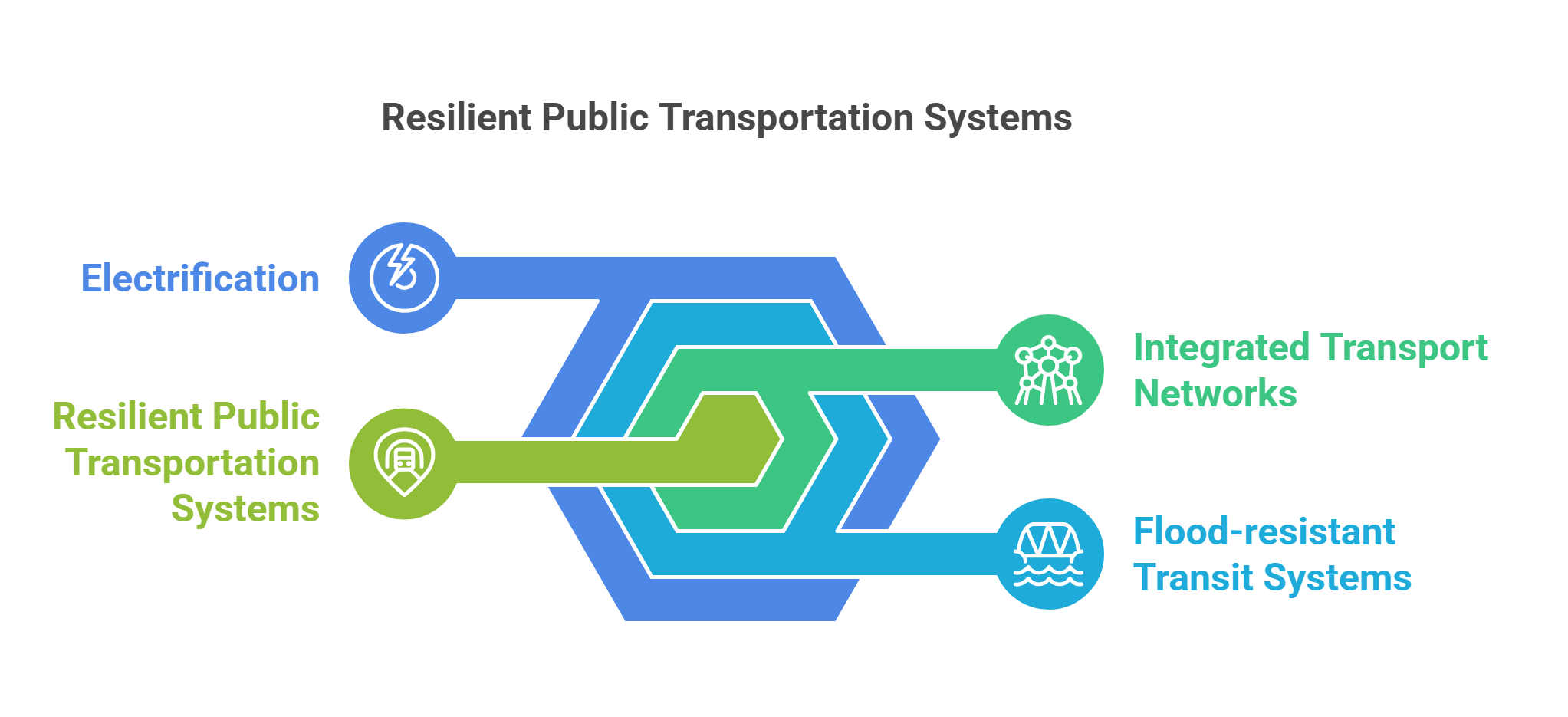
7. Affordable Housing Policies
Detailed Explanation: Affordable housing policies aim to provide safe and accessible housing for low- and middle-income populations, addressing urban inequality.
- Key Strategies:
- Subsidized housing programs.
- Inclusionary zoning that requires developers to build affordable units.
- Community land trusts to keep housing affordable over time.
Example: Vienna’s social housing model offers affordable rental options for a majority of its population.
Explained Simply: Affordable housing policies ensure that everyone has a roof over their head, no matter their income.
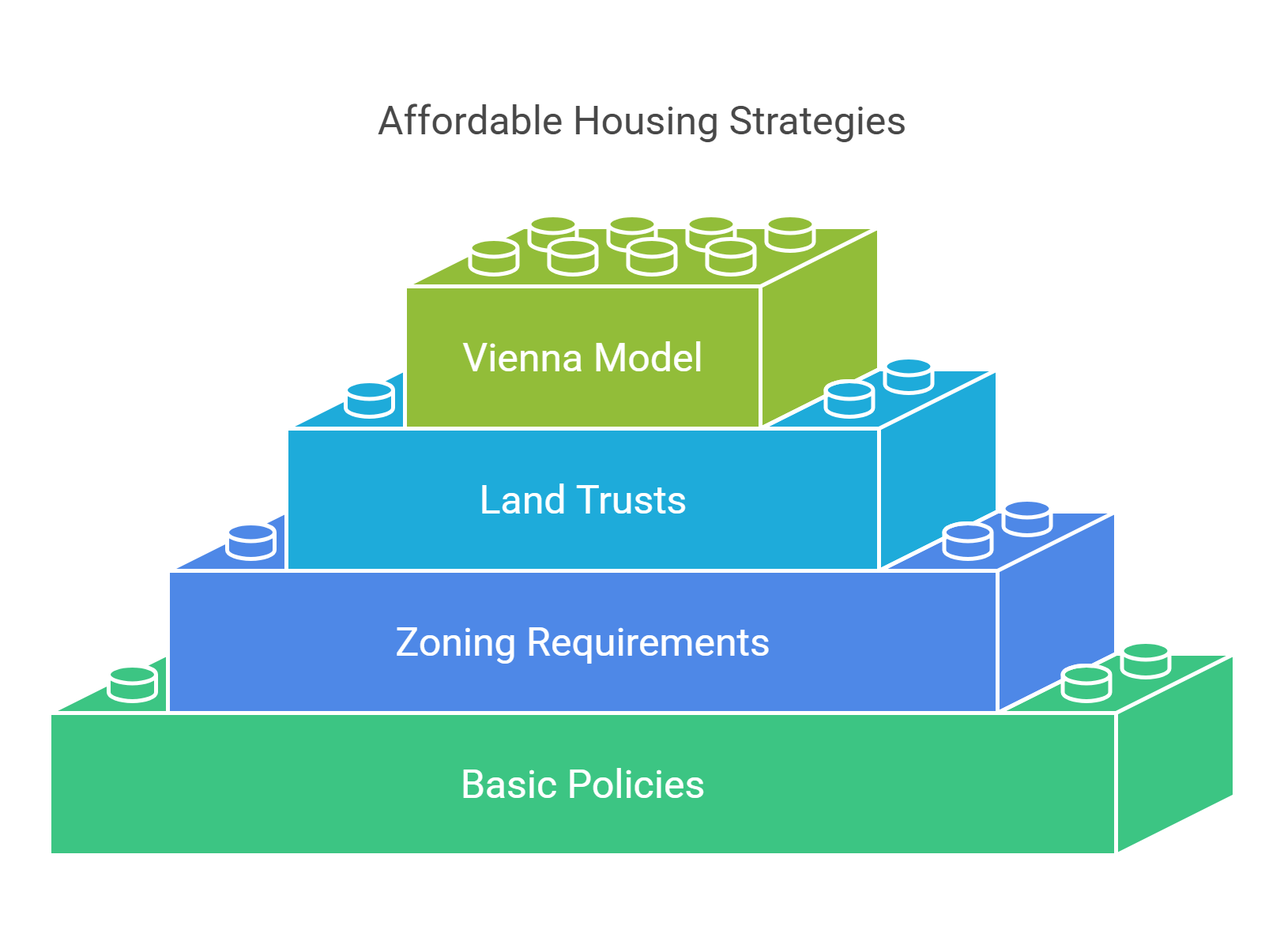
8. Green Roofs and Urban Cooling
Detailed Explanation: Green roofs, covered with vegetation, help combat urban heat islands, improve air quality, and manage stormwater.
- Key Benefits:
- Reduces building energy costs by insulating against heat.
- Absorbs rainfall, reducing flood risks.
- Enhances biodiversity in urban areas.
Example: Chicago’s City Hall features a green roof that lowers cooling costs and improves local air quality.
Explained Simply: Green roofs are like nature’s air conditioners for cities, keeping them cooler and greener.
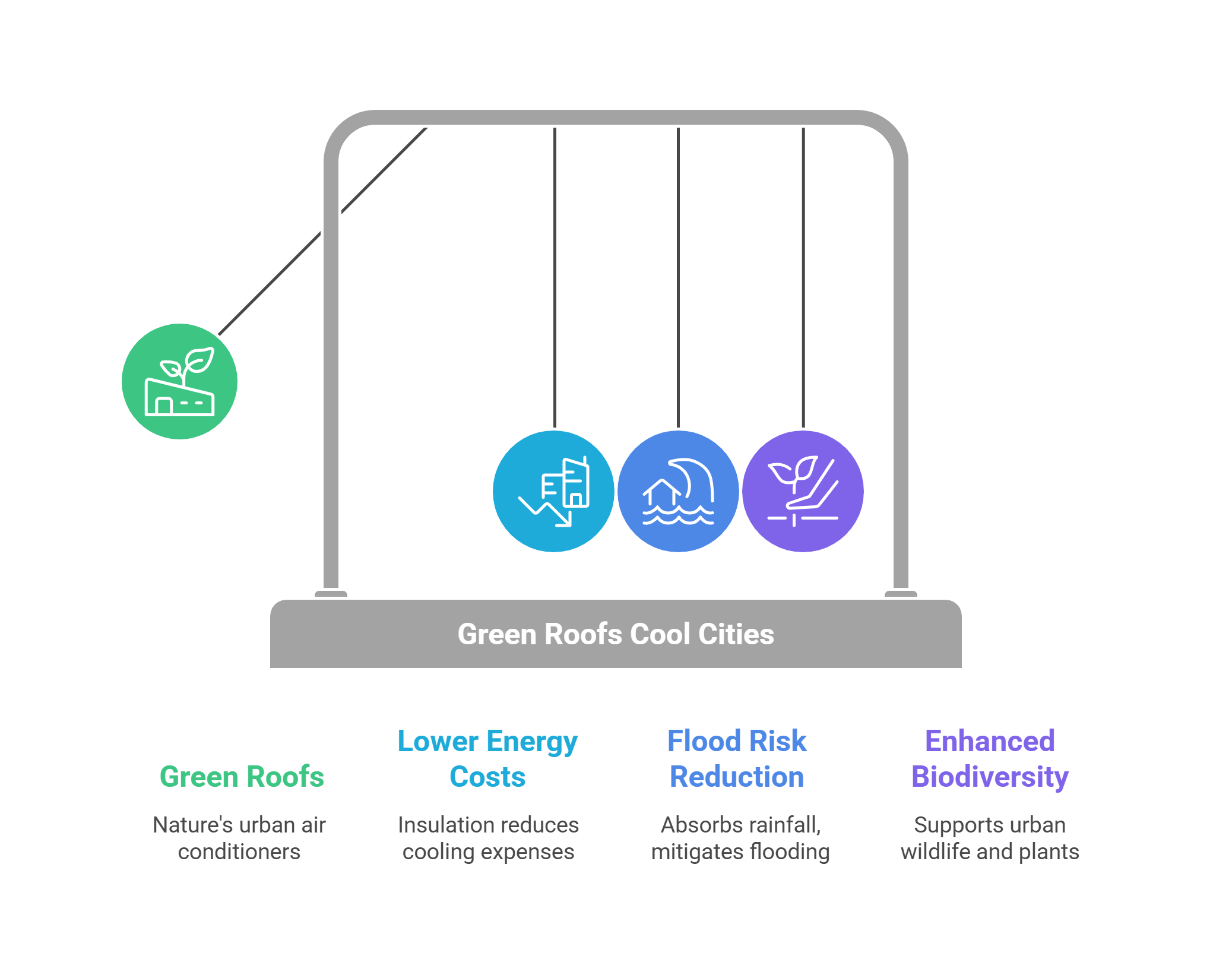
9. Community-Led Urban Development
Detailed Explanation: Community-led urban development involves local residents actively participating in planning and implementing urban projects, ensuring that development meets their needs.
- Key Elements:
- Participatory budgeting to allocate funds.
- Grassroots initiatives for neighborhood improvements.
- Partnerships with local governments and NGOs.
Example: Medellín, Colombia, involved communities in transforming its slums through improved infrastructure and public spaces.
Explained Simply: Community-led development is like giving neighborhoods a voice in shaping their future.
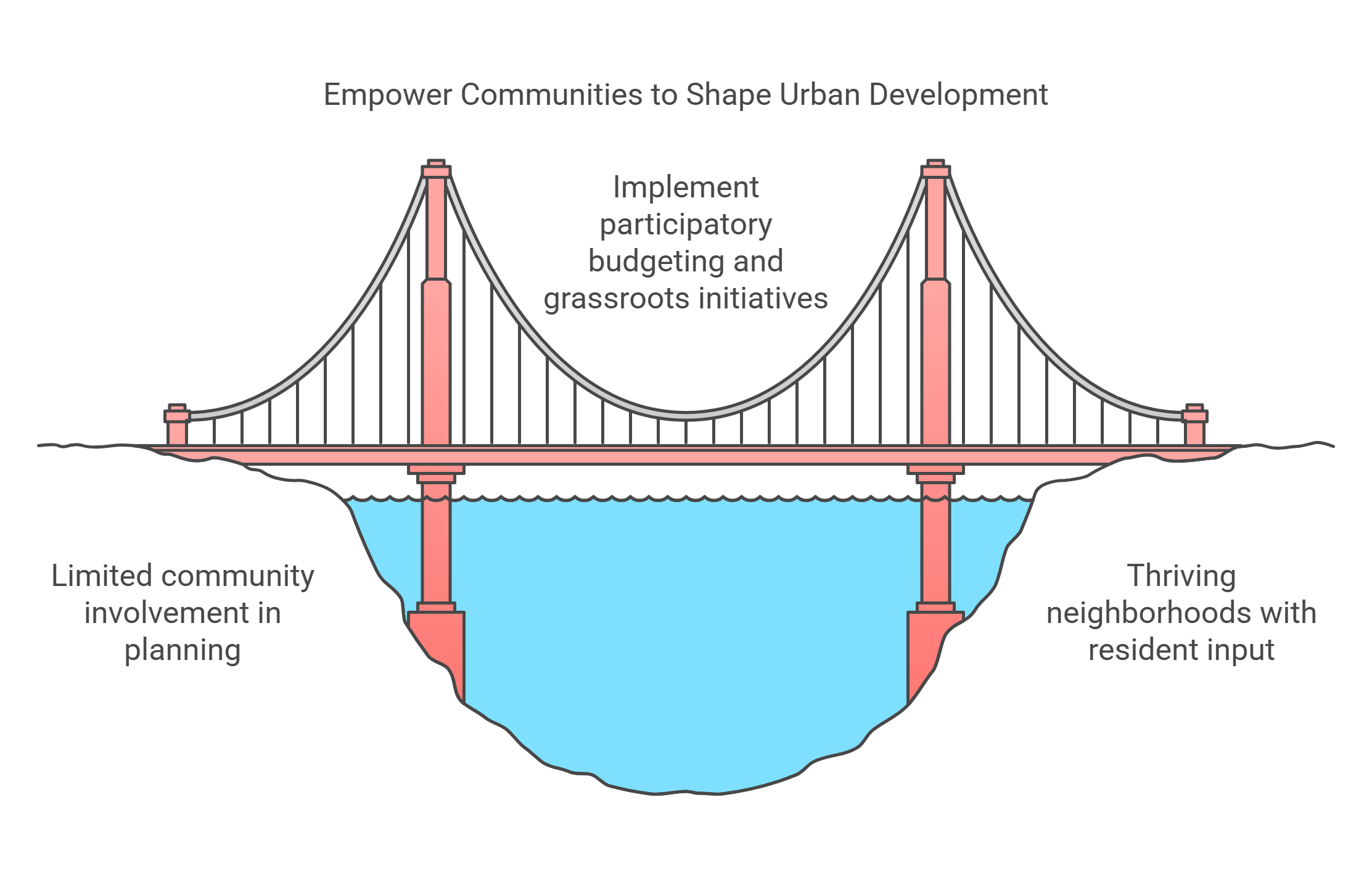
10. Smart Emergency Response Systems
Detailed Explanation: Smart emergency response systems use technology to improve the speed and effectiveness of responses to urban crises.
- Key Features:
- Real-time data from sensors and surveillance systems.
- AI-driven decision-making for resource allocation.
- Mobile apps for public alerts and updates.
Example: Amsterdam’s smart traffic systems prioritize emergency vehicles, reducing response times.
Explained Simply: Smart emergency systems are like citywide safety nets, powered by technology to save lives faster.
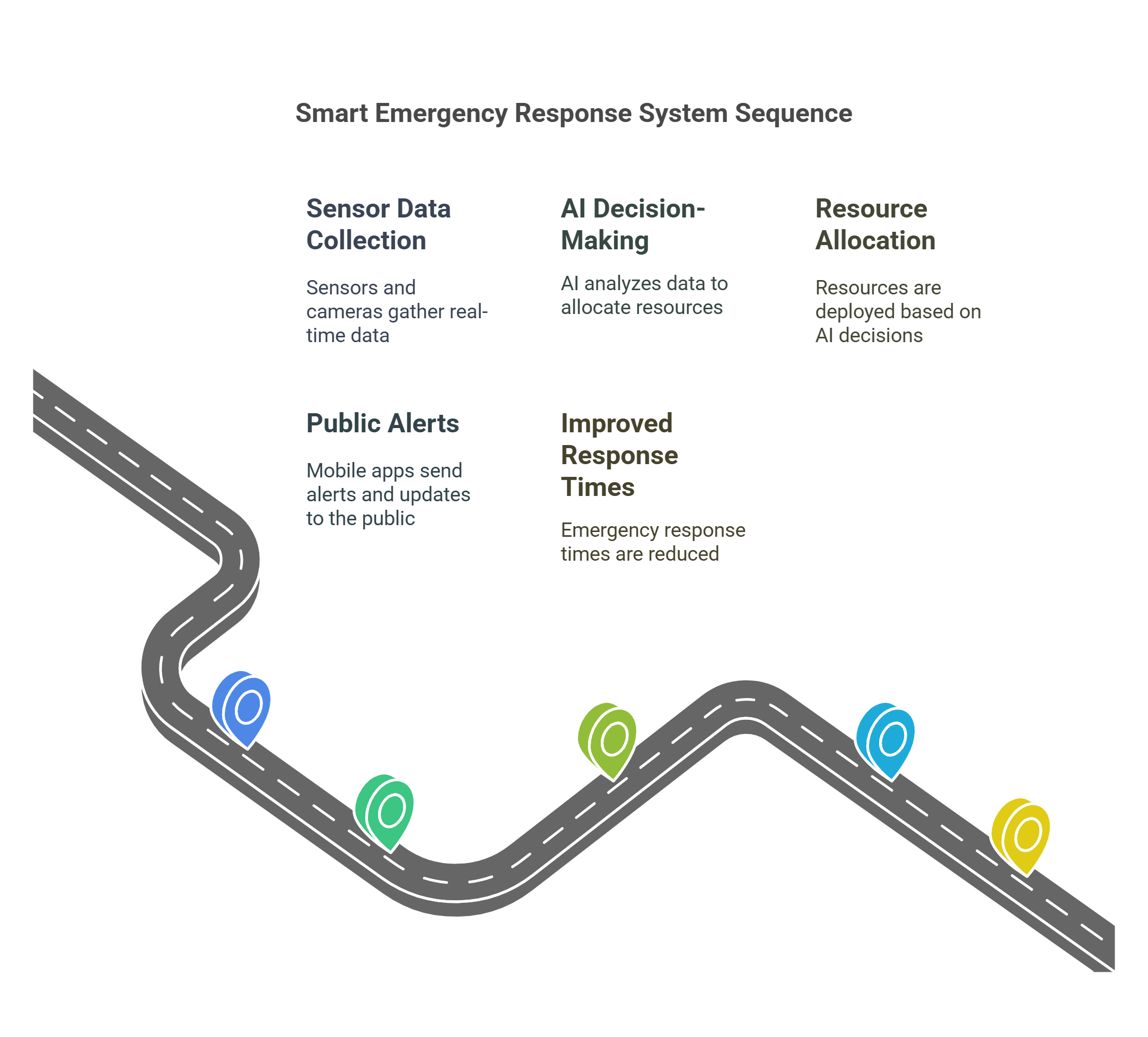
✨ Conclusion
Urban resilience highlights the strategies and innovations that enable cities to withstand challenges and thrive amidst rapid urbanization and environmental pressures. By understanding concepts like climate-resilient cities, sustainable water management, and smart emergency systems, readers can critically engage with RC passages on this vital topic. Resilient cities are key to building a sustainable future for all urban dwellers.










